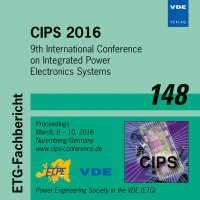Magnetoresistive current sensors as an enabling technology for ultra-high power density electric drives
Konferenz: CIPS 2016 - 9th International Conference on Integrated Power Electronics Systems
08.03.2016 - 10.03.2016 in Nürnberg, Deutschland
Tagungsband: CIPS 2016
Seiten: 7Sprache: EnglischTyp: PDF
Persönliche VDE-Mitglieder erhalten auf diesen Artikel 10% Rabatt
Autoren:
Slatter, Rolf; Brusius, Matthias; Knoll, Heiko (Sensitec GmbH, Lahnau, Germany)
Inhalt:
There is a wide variety of different applications in the field of power electronics where electrical currents need to be measured. However, the requirements for these measurement devices are becoming steadily more demanding regarding accuracy, size and especially bandwidth. In order to increase the power density of power electronics, as particularly important in the field of electromobility, there is a clear causal chain. Soft switching leads to higher efficiency and higher frequencies, which enable a smaller size for a given power output. Higher switching frequencies allow the size of magnetic components to be reduced significantly, resulting in more compact and lighter designs. This trend is now being reinforced by use of new wide bandgap semiconductor materials like silicon carbide (SiC) and gallium nitride (GaN), as their low on-resistances and low parasitic capacitances reduce switching losses. Conventional current sensor solutions, e.g. hall- or shunt based sensors exhibit a limited bandwidth, typically less than 250 kHz. Other current sensors, like those based on the Rogowski-Coil, are capable of highly dynamic current measurement, but are significantly more expensive, larger, and hence not suitable for large series applications. Furthermore, Rogowski-Coils are only capable of measuring alternating currents (AC), which prevents their use in applications where DC currents must also be measured. In order to meet the above mentioned requirements, magnetoresistive (MR) current sensors are ideally suited due to the fact that the bandwidth of the magnetoresistive effect extends up into the GHzrange. This paper describes the principle of operation and main performance characteristics of highly integrated MR current sensors and describes their benefits compared to other types of current sensor, in particular with regard to applications in ultra-high power density power electronics.


